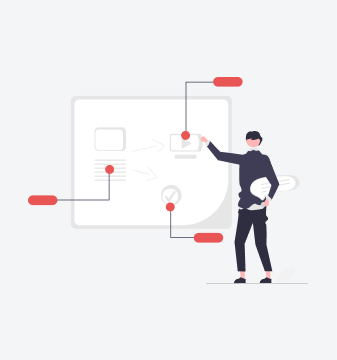Business research methodologies enable organizations to gather meaningful data and derive actionable insights. From qualitative interviews to quantitative analytics, selecting the appropriate research approach is foundational. This article will explore “DBA research methodologies” utilizing both qualitative and quantitative techniques to demonstrate how “doctoral studies” rigorously examine topics for optimal “business research methods”.
The Building Blocks: DBA Research Methodologies
“DBA research methodologies” incorporate diverse academic disciplines to study complex business problems. Common approaches include:
“Qualitative research” methods like ethnography and case study analysis are used to gather in-depth, descriptive data on behaviors, processes, and “why” questions through interviews, focus groups, observations, etc.
“Quantitative analysis” uses statistical modeling and large datasets to identify correlations and patterns that answer “what” and “how many” questions.
Tailoring the Methodology to the Research Question
Not all techniques work for every research scenario. Choosing the proper methodology requires clearly defining the question and desired outcomes upfront.
“DBA research methodologies” selection criteria include:
- Purpose: Is it an exploratory, descriptive, or explanatory study? What data is needed to address the research problem?
- Resources: Are enough participants, funding, tools, and researcher expertise available?
- “Business research methods” suitability: Do qualitative, quantitative or mixed methods fit best?
Qualitative Business Research in Practice
“Qualitative research“, like case studies, offers an intimate understanding of management challenges through first-hand experiences and perspectives.
For example, interviewing executives on leadership development initiatives may reveal:
- Onboarding program weaknesses increasing early leader turnover
- Communication breakdowns around development goal-setting
- Lack of coaching support to reinforce training concepts
Such vivid insights direct specific improvements. They also inform quantitative follow-up studies predicting retention boosts from particular changes.
Advantages of Quantitative Analytics
While qualitative designs provide depth, “quantitative analysis” delivers breadth by statistically testing hypotheses on large samples. Benefits include:
- Generalizability: Findings represent broader populations within confidence levels
- Objectivity: Statistical tests quantify reliability more definitively than subjective assessments
- Predictiveness: Data patterns forecast future outcomes to guide decisions
For example, leadership surveys across 500 managers could model links between specific coaching interactions, engagement gains and productivity metrics.

Achieving Research Objectives Through a Mixed Methods Approach
Combining qualitative and quantitative business research techniques as part of robust “DBA research methodologies” boosts the credibility and practical value of findings. The strengths of each approach offset the other’s limitations.
Qualitative stage:
- Gathers detailed observational and interview data on coaching interactions from a small leader sample
- Provides behaviors and sentiment themes to explore further using surveys
Quantitative stage:
- Tests earlier findings across wider groups using correlational statistics and regression analysis
- Connects coaching frequency and techniques to engagement, retention and performance measures
- Together, these phases yield nuanced discoveries that are impossible using one methodology.
Conclusion
Sophisticated “DBA research methodologies” necessitate understanding the full toolkit of “business research methods” from ethnographies to experiments. While qualitative designs reveal key psychological and social dynamics, quantitative analytics assess their business impacts more conclusively. Combining these techniques produces superior insights to empower impactful organizational decisions and leadership strategies.
FAQs
1. What are some examples of qualitative business research methods?
Common qualitative methods include in-depth interviews, focus groups, participant observations, case study analysis, and ethnographic research. These techniques gather non-numerical data on behaviors, emotions, organizational processes, and experiential perspectives.
2. When should quantitative methods be used instead?
Quantitative analytics, such as surveys and experiments, that collect numerical data for statistical analysis are preferred for testing hypotheses, predicting outcomes, generalizing results to wider populations, and establishing causal, correlational, or probabilistic relationships between variables.
3. What are the main benefits of mixed methods research?
Combining qualitative and quantitative techniques mitigates the limitations of each, providing richer insights through an initial exploratory phase to uncover themes, behaviors and language for follow-up hypothesis testing using broader samples and correlational statistics.
4. Does the research question determine the best methodology?
Yes, clearly defining the research purpose and goals upfront provides criteria to select the most appropriate primary and supporting techniques, whether qualitative, quantitative or both.
5. How can business researchers ensure high-quality studies?
Rigorous quality standards include mitigating bias, establishing validity and reliability measures, choosing representative samples, aligning analysis with data collected, accurately reporting limitations, and ethically obtaining informed consent.
6. What role do literature reviews play in research design?
Literature reviews critically examine prior theories and findings to position new questions, avoid duplication, select proven measurements, build foundational knowledge, and identify promising methodological directions.
7. Which analytics methods are trending in business research?
Data mining, machine learning predictive modeling, social network analysis, multivariate statistics, and text mining are increasingly supplementing traditional analytics to uncover insights from today’s complex business datasets.




